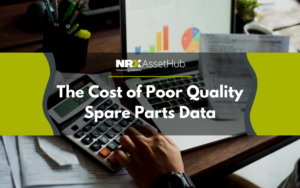Some businesses choose to create a bills of materials in spreadsheets. It may seem simple at first, I mean, who doesn’t use Excel? This may seem like a viable option, but not for long. As a company experiences growth and continues to scale, spreadsheets can become quite problematic very fast.
Many asset intensive companies still use the outdated method of building their BoMs in spreadsheets and then transferring the data into an EAM or CMMS system. You may think this is a small problem, but it can affect your organization in significant ways. One of the common problems with building BoMs in a spreadsheet is having different versions floating around the company and not knowing which is correct and who has access to what. Even if you make the spreadsheet read-only, people can still download the file onto their individual computer. This creates multiple documents floating around, with no adequate tracking of who made what changes.
Still not convinced? Consider this question, what happens when multiple products share similar parts? Scrolling through an entire spreadsheet to identify homogenous parts can be a very long, tedious process and wastes much time that could be spent elsewhere. If these parts are in different locations, it becomes even more tedious.

Spreadsheets are not databases
Spreadsheets are great for basic math, addition, subtraction, and what not. Now here is a newsflash: spreadsheets were not designed for creating or storing highly complex asset data. They also have little to no data integrity tools. Meaning that your data quality will likely be lower than what it would be in an asset management system. Additionally, spreadsheets don’t reduce the likelihood of duplicates appearing in your data. If anything, the chances of duplicates showing up are relatively high. Let’s not forget inaccurate, incomplete, or straight up missing data. Spreadsheets have no way of helping you fix these problems or flagging issues with data integrity.
The effects of poor asset data have been covered quite extensively through many of our blogs. At the end of this page, you will find a few of our past blogs to refresh your memory.
The main takeaway here is that spreadsheets help businesses across industries store and track information. However, the more complex the data, the less effective a spreadsheet becomes. If your company is still using spreadsheets to store BoM information, we are here to help! Our NRX AssetHub solution is designed to perform a thorough data cleanse to ensure your new system will function at its best. It can verify the data in your spreadsheet and flag data integrity problems. This way, you will be sure your data is 100% accurate before loading it into a new system. If you are curious about our solution, feel free to book a demo, and our team would be happy to get in touch with you.
The Problems with Procrastinating on a Materials Cleansing Solution
Building BoMs with Bad Spare Parts Data
The Cost of Poor Quality Spare Parts Data
Share this article




